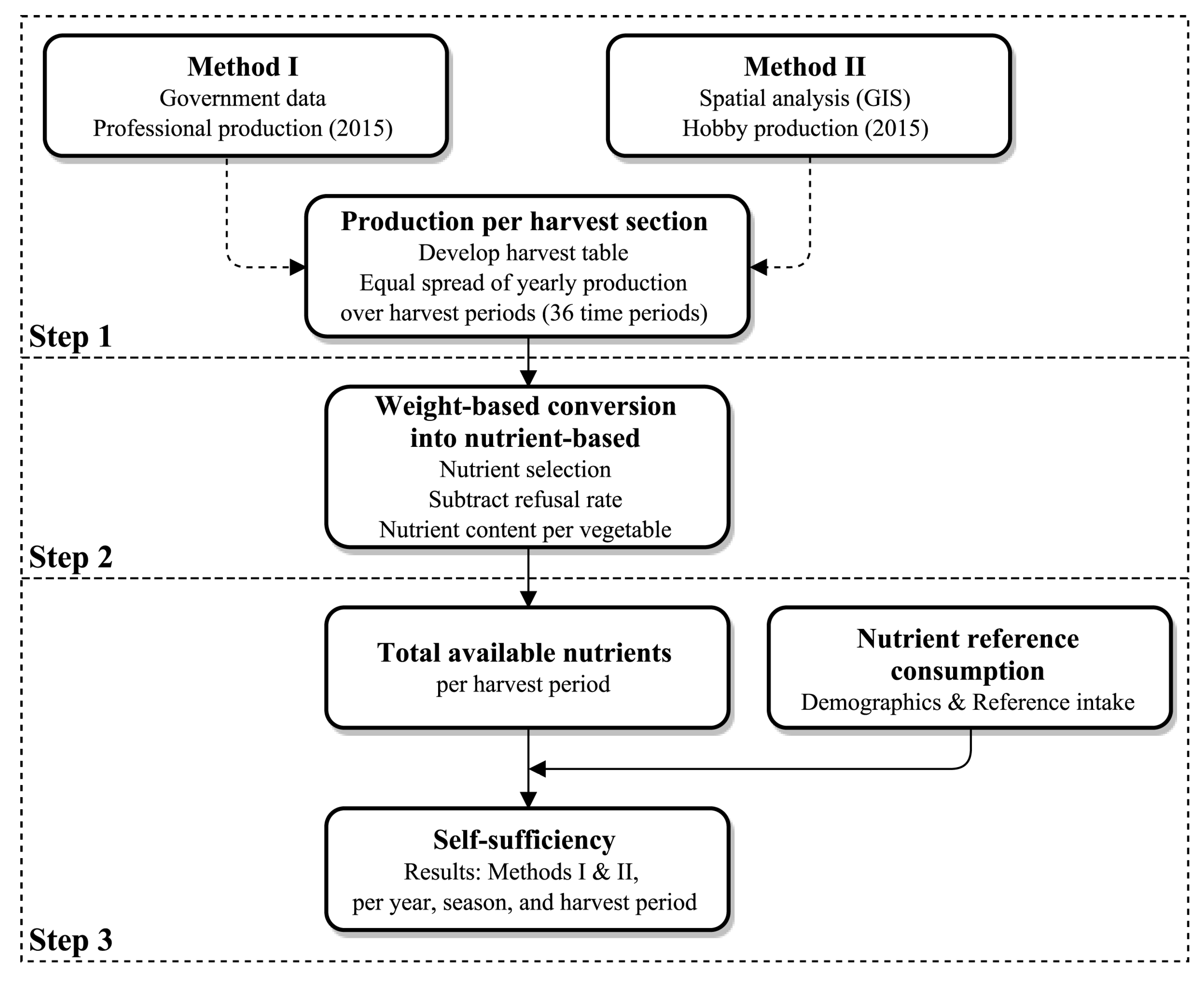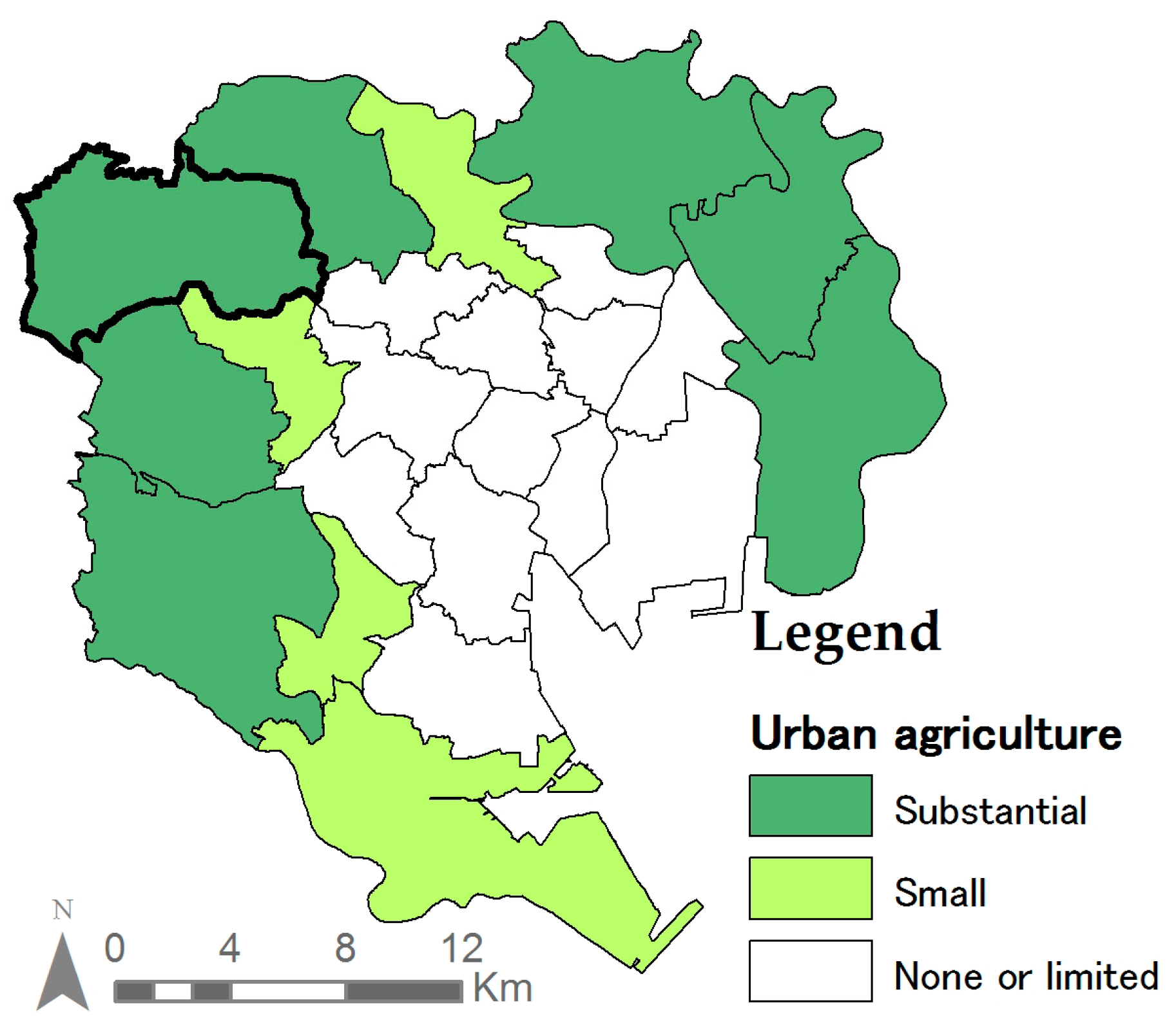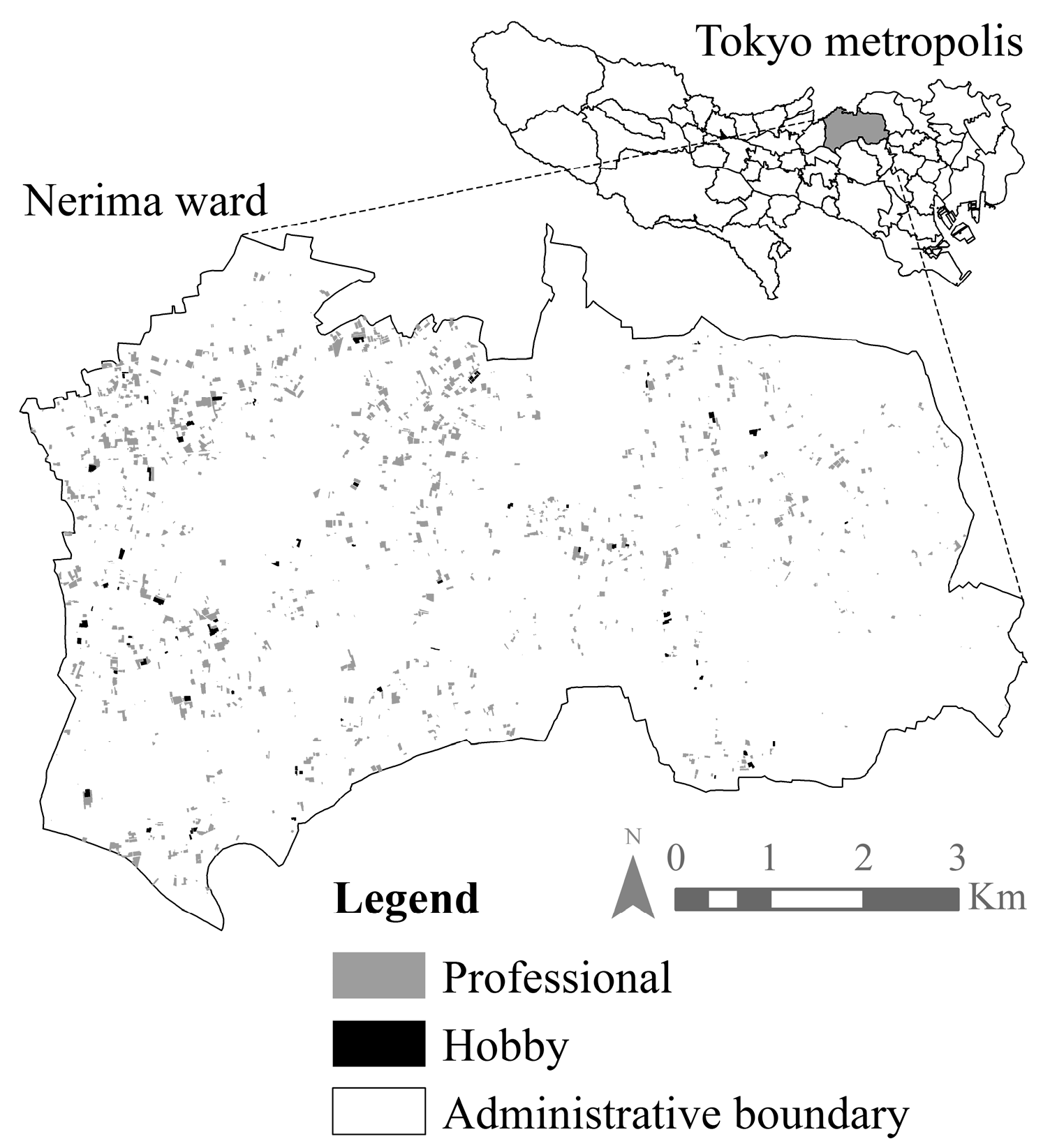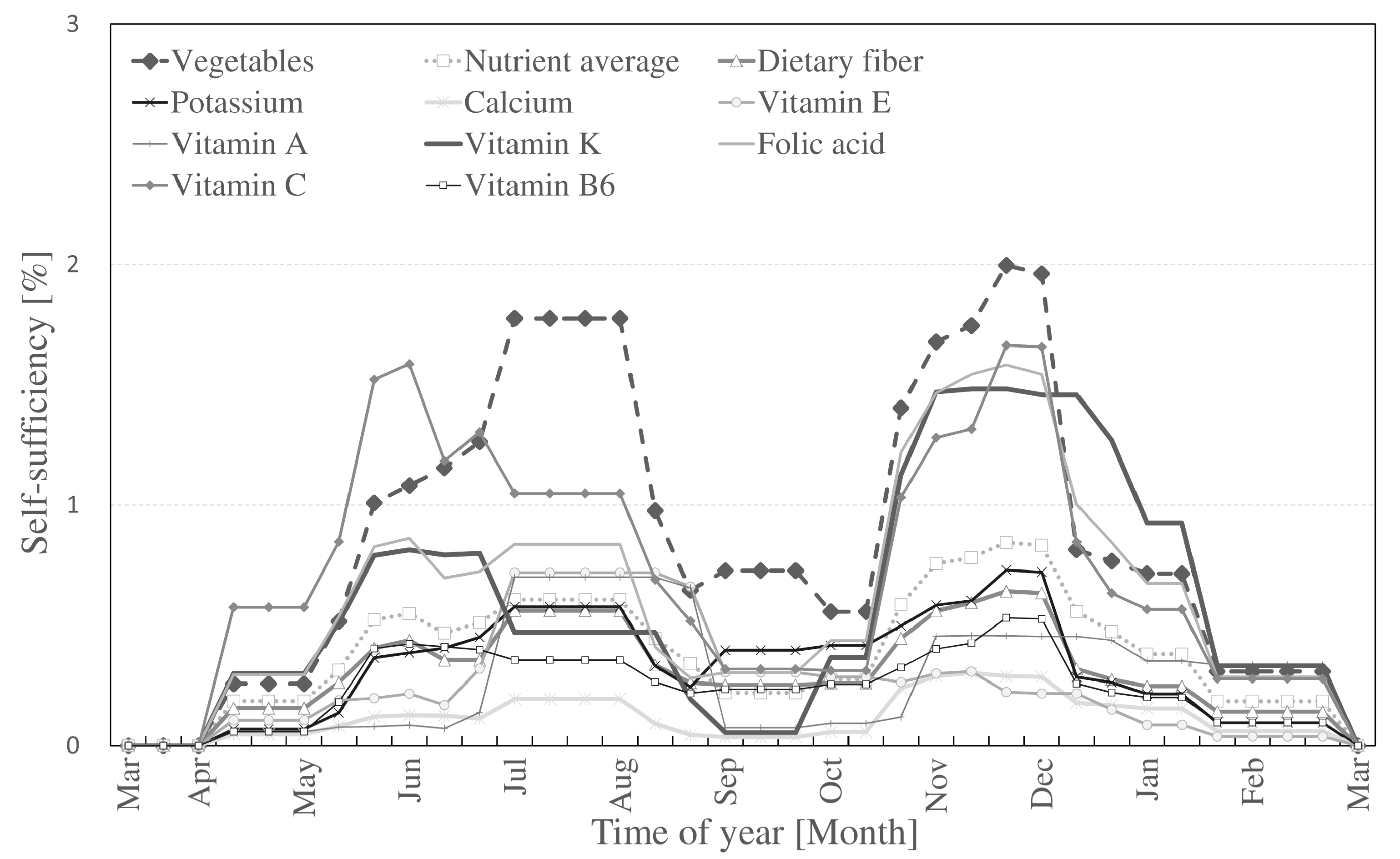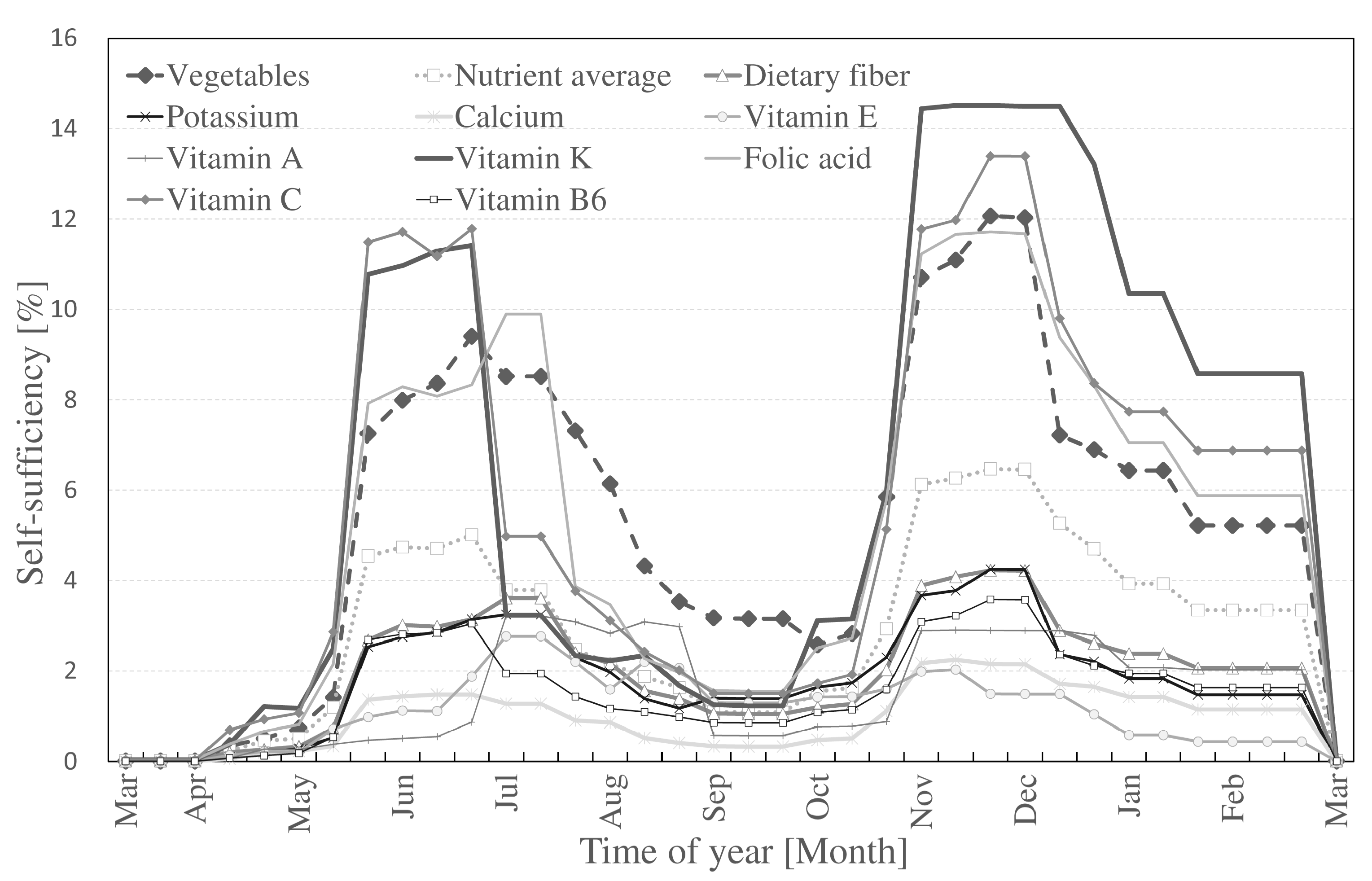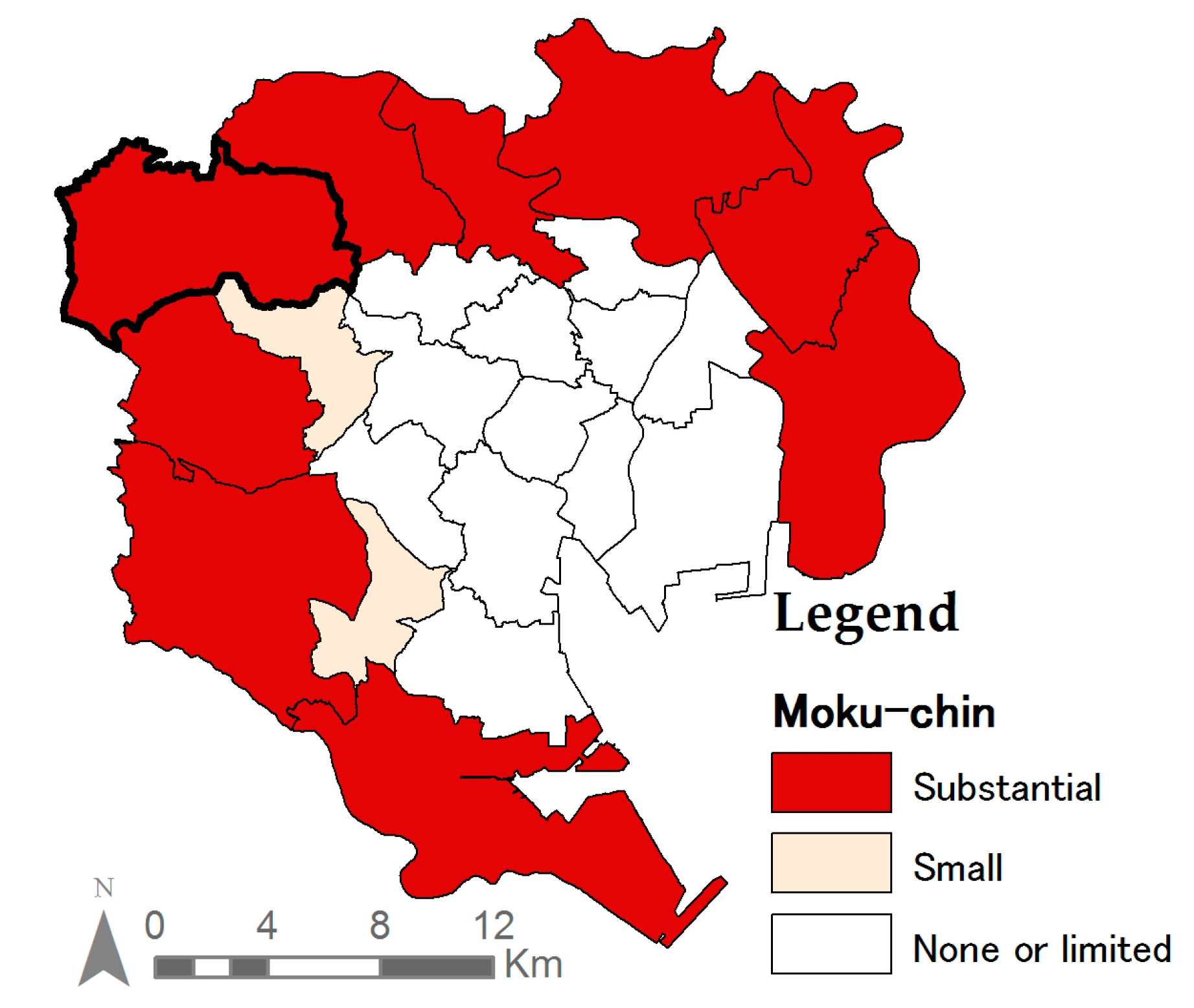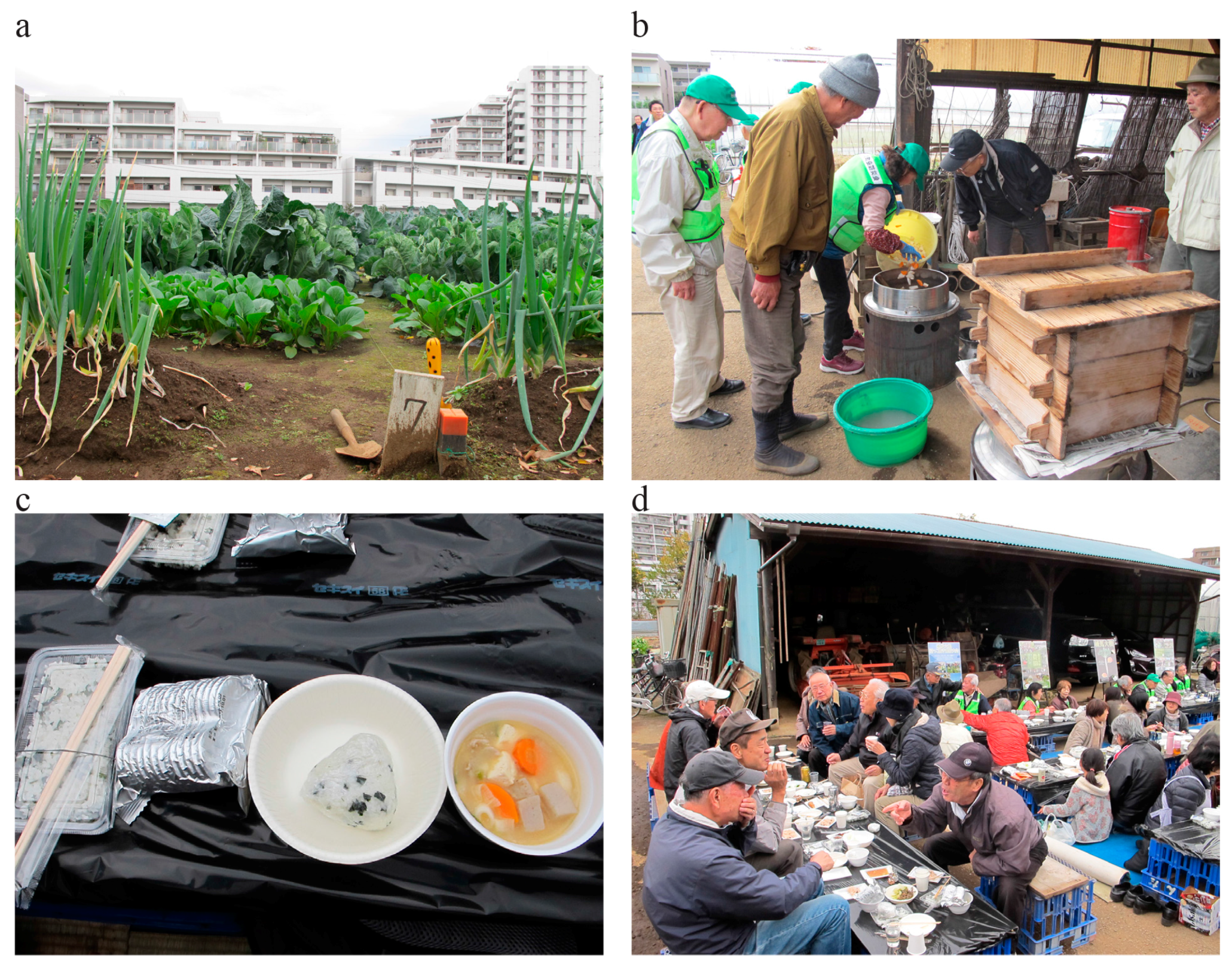1. Introduction
Rations and emergency foods in post-disaster situations are rich in carbohydrates and focus on providing energy to survivors [
1]. Such foods conventionally have a long shelf life (non-perishable). Nutrient-rich and fresh products, however, have short shelf lives [
2]. Non-perishable foods have been preferred for emergency responses and meet the short-term needs of survivors. Although intended for short-term interventions lasting a few days, post-earthquake studies from around the world—including Haiti [
3], Indonesia [
4], Japan [
5], and Nepal [
6]—have reported that survivors continued to rely on emergency food during mid- (days to weeks) to long-term (weeks to months) periods, depending on the area and scale of the disaster [
2]. For example, after the Great East Japan Earthquake on March 11th, 2011, distribution of fresh vegetables, meat, fish, and dairy products with well-balanced proteins and vitamins [
5] was difficult [
2,
7,
8,
9]. Even one month later, survivors’ diets were largely limited to long-shelf life food, which had a high percentage of carbohydrates [
5,
7]. In some areas, disasters prior to the earthquake already had diminished rations, exacerbating the dearth of nutrients. To make matters worse, the earthquake damaged the main industrial nutrition supplement provider [
10].
The scarcity of fresh fruits and vegetables resulted in deficiencies of corresponding nutrients such as dietary fiber and vitamin C. A survey of those in temporary shelters in Ishinomaki, Japan linked a lack of dietary fibers normally found in fresh fruits and vegetables, with an increased number of gastrointestinal symptoms [
7]. These symptoms may have also contributed to decreased food intakes among 23% of the 236 survivors surveyed one month after the disaster [
7]. Diets rich in carbohydrates likewise caused high blood glucose levels [
7]. Research conducted 15 weeks after the Great East Japan Earthquake found that cardiovascular diseases had increased significantly [
11]. Vitamin C is known to prevent cardiovascular diseases [
12]. However, vitamin C was deficient at the time in previously healthy people [
10]. The lack of proper nutrition over prolonged periods can thus result in various health issues [
13]. Similar situations can occur in Tokyo, where rations consist of crackers, pregelatinized rice, instant noodles, and rice [
2]. Although Japan is prone to large-scale disasters, one household survey revealed that most households did not store rations or did so insufficiently [
2]. As access to nutrients during disaster situations has proven to be challenging, alternative nutrient sources must be explored and better understood.
In this study, we examine urban agriculture (UA) as one possible disaster preparation food source to supplement the emergency foods. Disaster preparation food [
2] is defined as: “
food needed to maintain psychological and physical health for disaster survivors between the time a disaster occurs and when life returns to normal” [
2] (p. 46). According to this definition, disaster preparation food includes food with a short-shelf life that can be used until distribution of ingredients is restored [
2]. Furthermore, an assessment of pre-earthquake investment after the 2010 earthquake in Haiti identified UA as a source of local food security and nutrition [
14]. UA is broadly defined as the growing of plants and raising of animals inside the city [
15,
16], in the present study a focus is made on vegetable production. People engaged with UA have reported positive impacts on psychological health, nutrition [
17,
18,
19], and community resilience [
20]. Although more research is required, a systematic literature review showed positive associations with dietary diversity [
21]. Therefore, we hypothesize that UA may very well be a viable disaster preparation food source if available in disaster struck areas.
Previous UA self-sufficiency studies addressed annual self-sufficiency of the total vegetables [t] [
22,
23,
24,
25]. However, disasters are intractable and impact at random [
26]. Therefore, the present study aims to quantify UA vegetable production and the resulting nutritional self-sufficiency throughout the year for mitigating post-disaster situations. The nutritional self-sufficiency in this study is estimated according to the mean recommended intake by nutrient compared to the availability of that nutrient from agricultural production.
3. Results
Figure 4 shows the spatial analysis (Step 1, Method II) that identifies 53 allotment UA plots (7.38 ha) and 26 experience UA plots (7.32 ha) in Nerima ward. The figure also shows the distribution of the 1396 professional UA farms (180.23 ha) used in Method I. The average size of an UA plot in the ward was determined as 1321.59 m
2. The yields estimated by Methods I and II were 4776 tons and 884 tons, respectively, totaling to 5660 tons.
Table 3 shows the yield of each vegetable obtained from governmental data by Method I. By omitting the refuse [
36] and factoring in the number of harvest periods, the harvests ready for consumption in each time period were added further quantifications in Step 2. The same procedure was applied for estimating production from hobby UA, using data from the previous studies in Method II. The results are shown in
Table 4.
Table 5 shows results regarding estimated weights and nutrients.
The weight-based estimations from the recommended per capita vegetable intake and production in Nerima ward indicate a self-sufficiency rate of 6.18%. This weight-based estimation also enables comparison with previous self-sufficiency studies. The nutrient-based results were estimated with the reference intake per nutrient. Nine nutrients met the selection criteria described in Step 2. The required intake of these nutrients for the entire population of Nerima was converted to kilograms (
Table 5). The self-sufficiency rates estimated according to each Method in step 3, reflect the reference intake per nutrient. Nerima was most self-sufficient in vitamin K, vitamin C, folic acid, dietary fiber, and potassium, which are derived from vegetables. Lower levels of self-sufficiency were found for vitamin B6, vitamin A, vitamin E, and calcium also coming from vegetables. The average nutritional self-sufficiency rates according to Methods I and II were 2.48% and 0.38%, respectively. These combine to the aggregated average nutritional self-sufficiency rate of 2.86%. Although it had a small representation compared to that of professional UA, hobby UA still contributed to 0.98% of the ward’s vegetable self-sufficiency. Fluctuations were also found throughout the seasons based on utilized species and their resulting harvests as shown in
Table 6.
The self-sufficiency rates for the nine selected nutrients and overall self-sufficiency of vegetables are shown in
Figure 5 (Method I) and
Figure 6 (Method II). The figures are based on the three time periods per month as shown in the harvest table produced in Step 1. Variations in self-sufficiency are present because of two main factors: (1) type of nutrient; (2) time of year. According to the nutrient scale from professional UA in
Figure 4, vitamin C showed the highest self-sufficiency compared to other nutrients while vitamin E was found to have the lowest rates. In
Figure 6, the highest self-sufficiency was also vitamin C, however, due to the variation in vegetables cultivated (as shown in
Table 3 and
Table 4), calcium was the lowest. Winter vegetables are harvested by the end of February, resulting in the lowest self-sufficiency in March and beginning of April. According to the harvest table, these times are mostly planting periods. The highest self-sufficiency was observed from July to the end of August (summer harvest) and from the end of October to the beginning of December (winter harvest). Although professional UA contributed more in sheer amount because of its larger presence, hobby UA contributed more with less land and experienced a more constant supply than professional farms.
Finally, the combined vegetable and nutritional self-sufficiency rates from Methods I and II are shown in
Figure 7. Variations throughout the year can be attributed to fluctuations in the planting and harvesting seasons (
Figure 2). Vegetable weight-based self-sufficiency averaged 5.24% across the year, higher than the nutritional average of 2.86%. The hobby UA analyzed with Method II contributed to a more stable supply of UA vegetables and nutrients in Nerima ward. Averages in self-sufficiency were found for vitamin K (6.15%), followed by vitamin C (5.50%), folic acid (5.15%), dietary fiber (1.96%), and potassium (1.82%), vitamin A (1.54), vitamin B6 (1.54%), vitamin E (1.13), and calcium (0.96%).
5. Conclusions
UA has potential to supplement rations and other emergency foods as disaster preparedness food, depending on the time of year. In the present case study, the mean self-sufficiency rates varied according to season (winter (4.20%), summer (3.08%), fall (2.40%), and spring (0.21%)). If contemporary emergency food rations are to prevent diet-caused symptoms among survivors, such rations should be better strategized with local UA availability and the time of year the disaster takes place. The present case study showed variations in the mean self-sufficiency by nutrient (vitamin K (6.15%), vitamin C (5.50%), folic acid (5.15%), dietary fiber (1.96%), potassium (1.82%), vitamin A (1.54), vitamin B6 (1.54%), vitamin E (1.13), and calcium (0.96%)) indicating the importance to address self-sufficiency studies on scale of nutrients. Also, it was discussed that focusing on the vulnerable target groups (age groups 0–14, and 50+) of refugees, the mean self-sufficiency of selected nutrients in the present case study was 22.71%. This study has implications for policies and emergency response strategies around the world to increase the intake and availability of vegetables with crucial nutrients provided by UA during post-disaster situations.
The two main findings of this study were: (1) UA can provide a valuable contribution to the nutrient provisioning of survivors during different stages after a large disaster; (2) emergency food must be targeted according to the time of year the disaster takes place to meet the needs of survivors.
